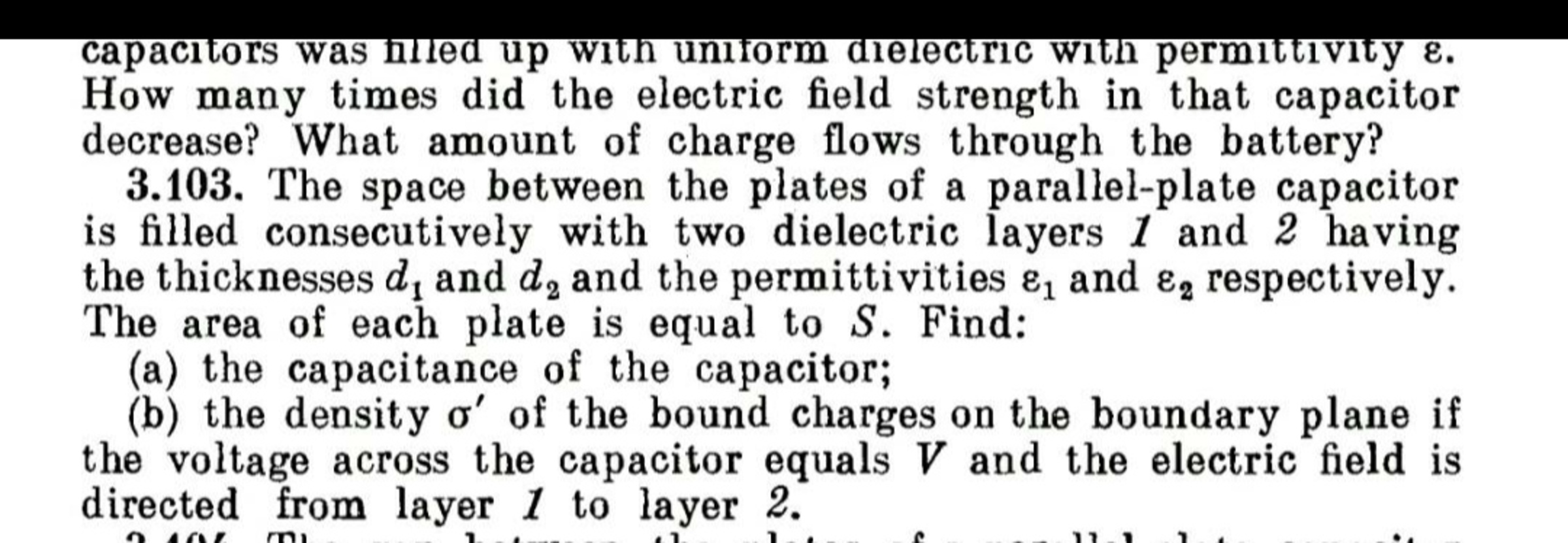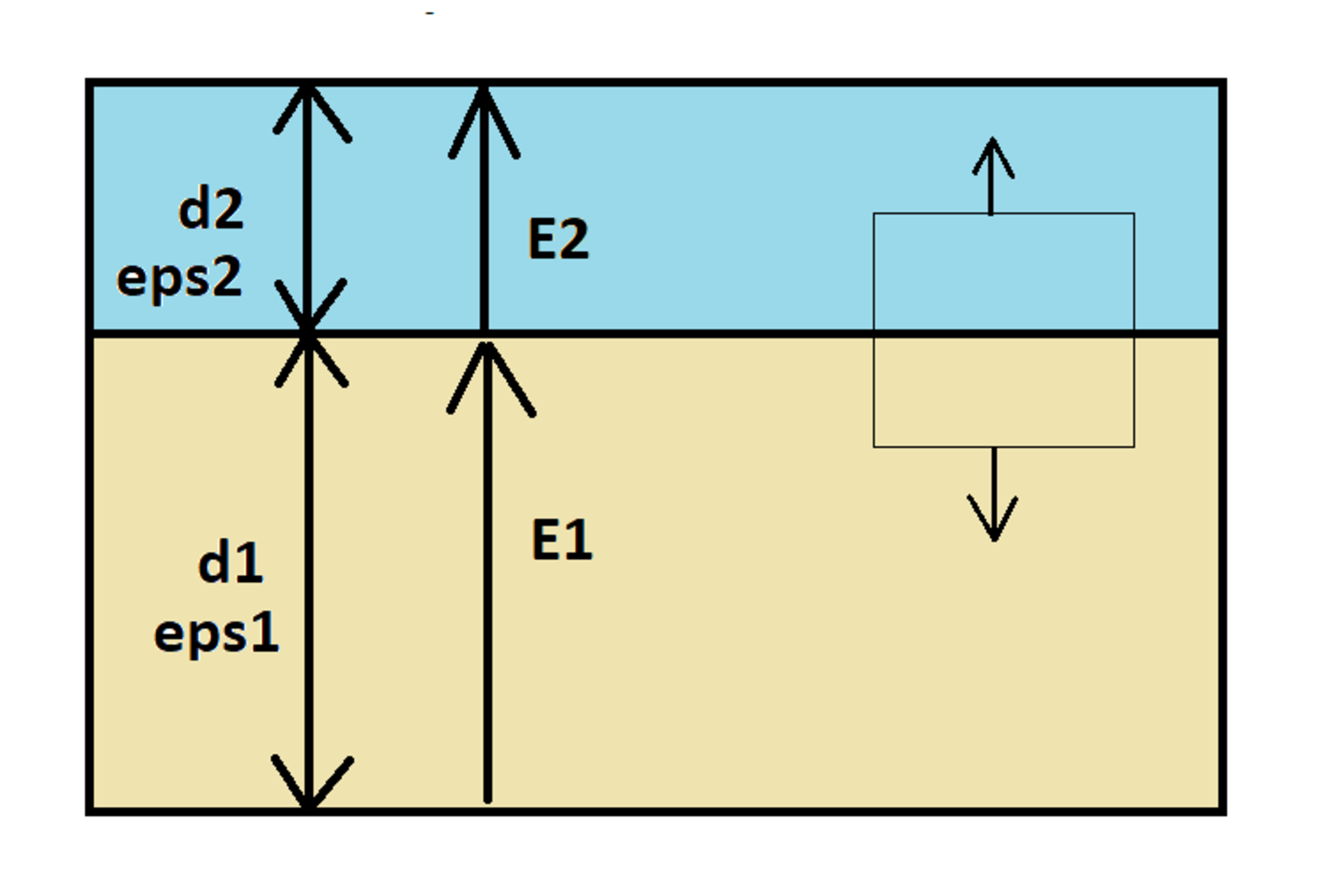Bound Charge at Dielectric Interface
Here is a question sent to me recently:


I will look at part (b). Let and be the relative electric permittivity values. The field continuity equation is (where the electric fields are perpendicular to the interface boundary):
Relate the voltage across the capacitor to the electric fields:
Consider the Gaussian surface shown to the right within the dielectric. The formula for bound charge at a dielectric interface is similar to the formula for Gauss's Law, but with a slight variation. Surfaces and are the top and bottom Gaussian sub-surfaces.
Note that the normal vector for points in the opposite direction as the electric field, and the normal vector for points in the same direction as the electric field. Let these surfaces both have area . The equation simplifies to:
Applying the field continuity relationship makes the relative permittivity terms disappear.
Dividing both sides by gives the bound charge density:
Easy Math Editor
This discussion board is a place to discuss our Daily Challenges and the math and science related to those challenges. Explanations are more than just a solution — they should explain the steps and thinking strategies that you used to obtain the solution. Comments should further the discussion of math and science.
When posting on Brilliant:
*italics*or_italics_**bold**or__bold__paragraph 1
paragraph 2
[example link](https://brilliant.org)> This is a quote# I indented these lines # 4 spaces, and now they show # up as a code block. print "hello world"\(...\)or\[...\]to ensure proper formatting.2 \times 32^{34}a_{i-1}\frac{2}{3}\sqrt{2}\sum_{i=1}^3\sin \theta\boxed{123}Comments
@Steven Chase Thankyou sir
Log in to reply
That's impressive. You found it ten seconds after I uploaded it
@Steven Chase Sir can you please post a RLC problem . I think due to some reason you are upset with me. If yes then sorry. If no, then why you don't reply me?
Log in to reply
There's a new one up now. I usually don't know when I'm going to post another one until just before I post it.
@Steven Chase Hel20 I was again solving this question because I was doing revision.
And i just got stuck in your first line. I have forgot the concept little bit.
That line ϵ1E1=ϵ2E2
Just give me the proof of this line. Thanks in advance.
Hope I am not disturbing you.
Log in to reply
In the absence of free charge, the permittivity-weighted normal components of the electric field are continuous at a dielectric interface. Here is a further reference:
https://en.wikipedia.org/wiki/Interfaceconditionsforelectromagneticfields
@Steven Chase Hello, hope you are doing well
The formula which you have used for Qb is it a original formula for finding bound charges ?